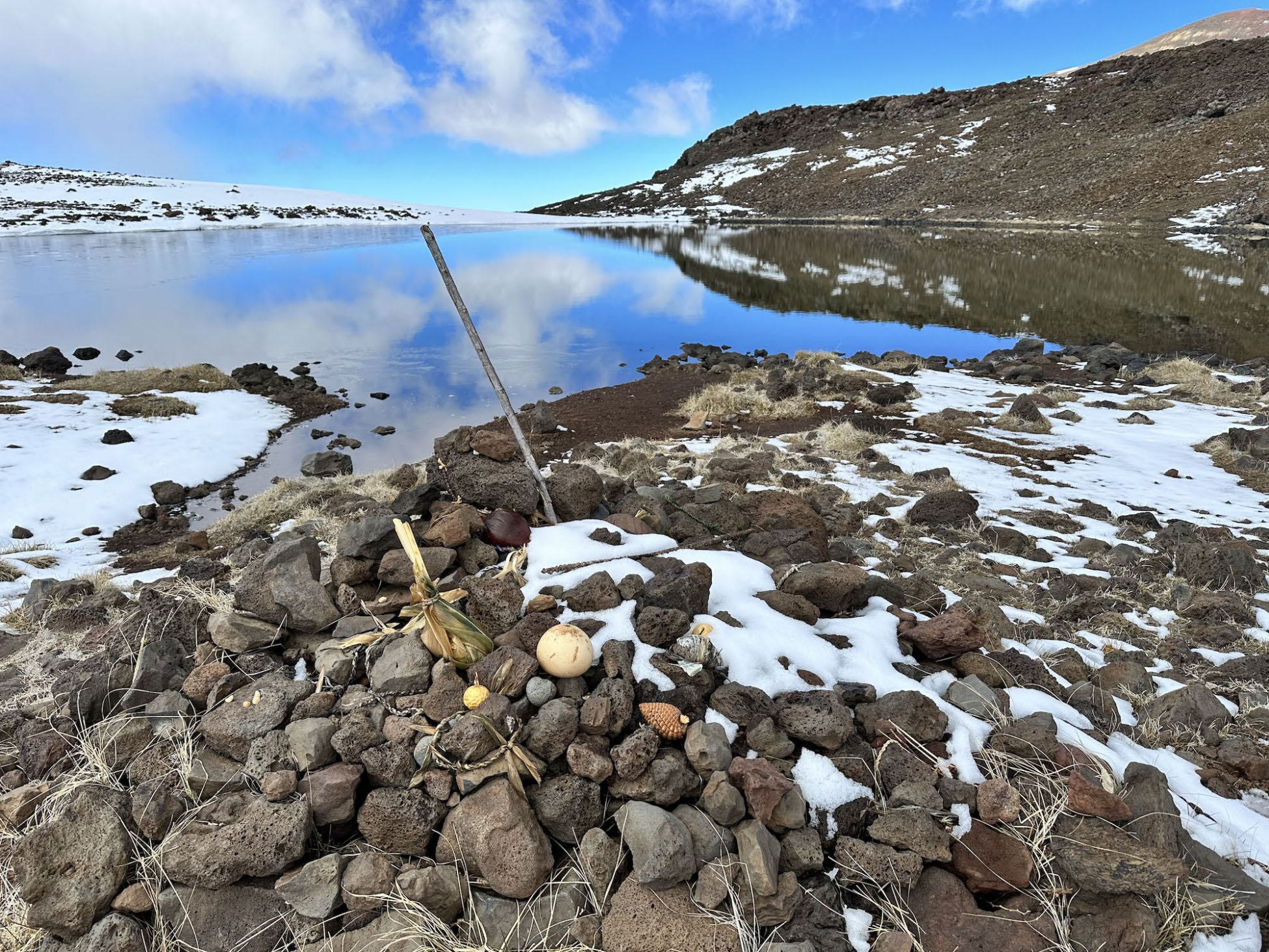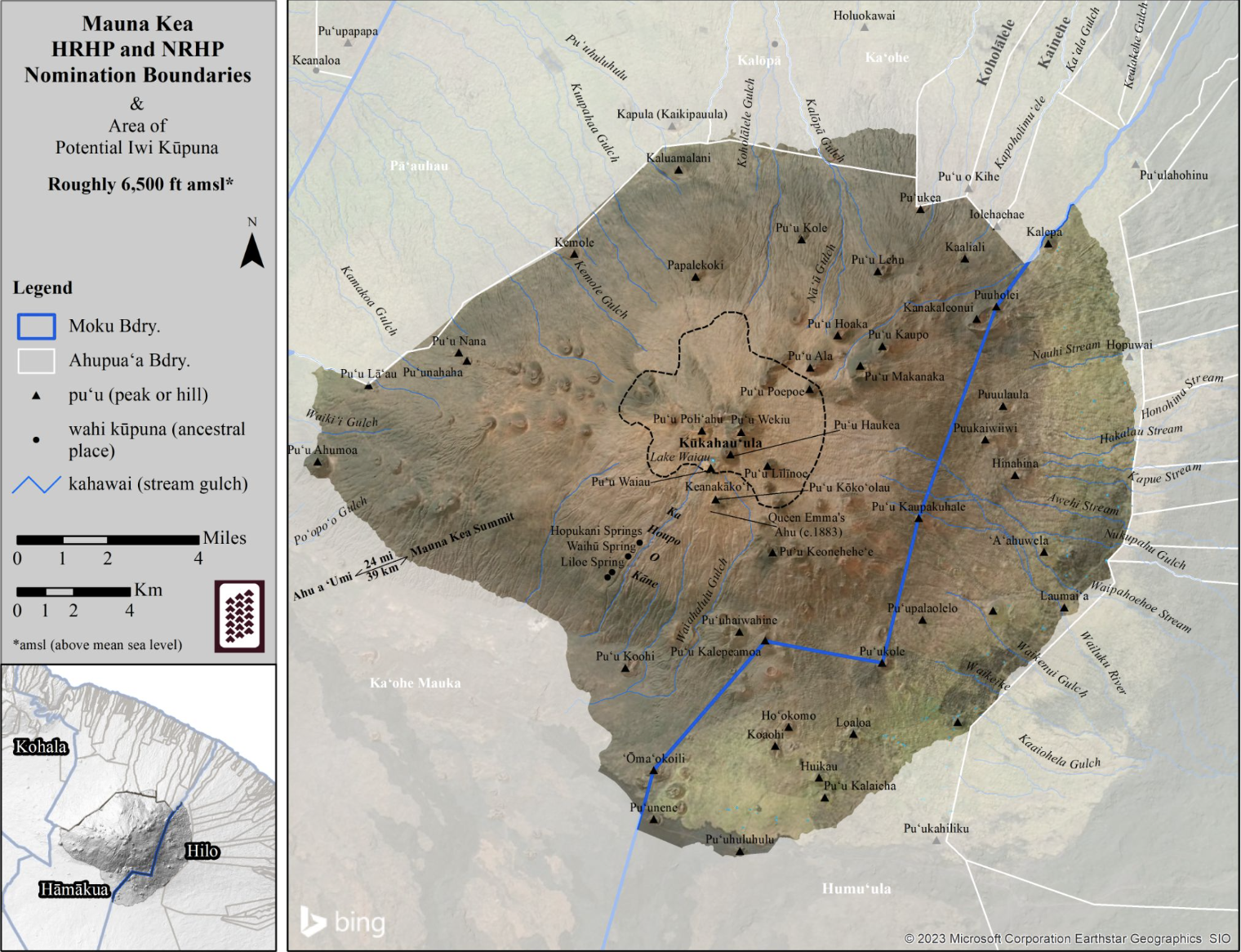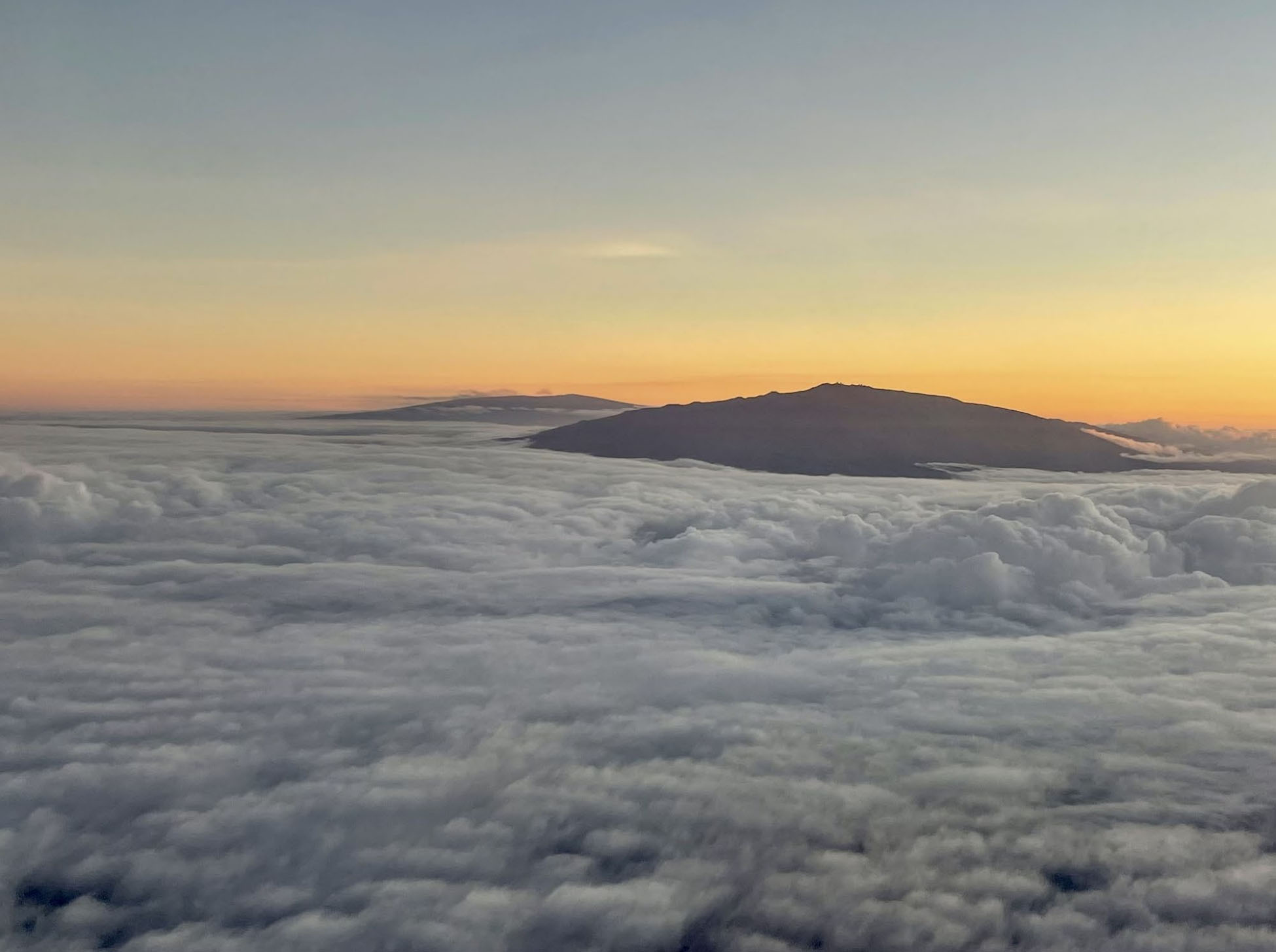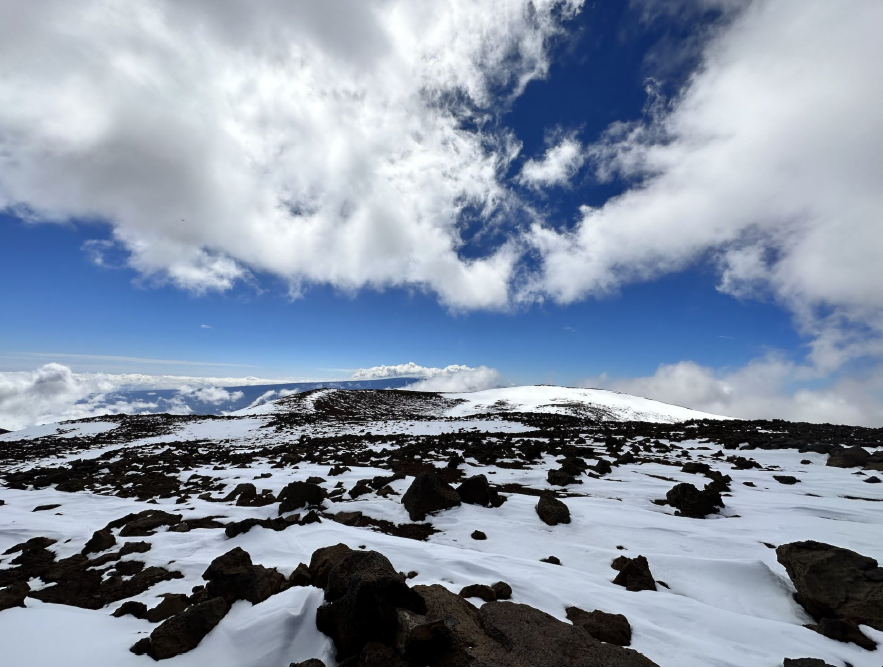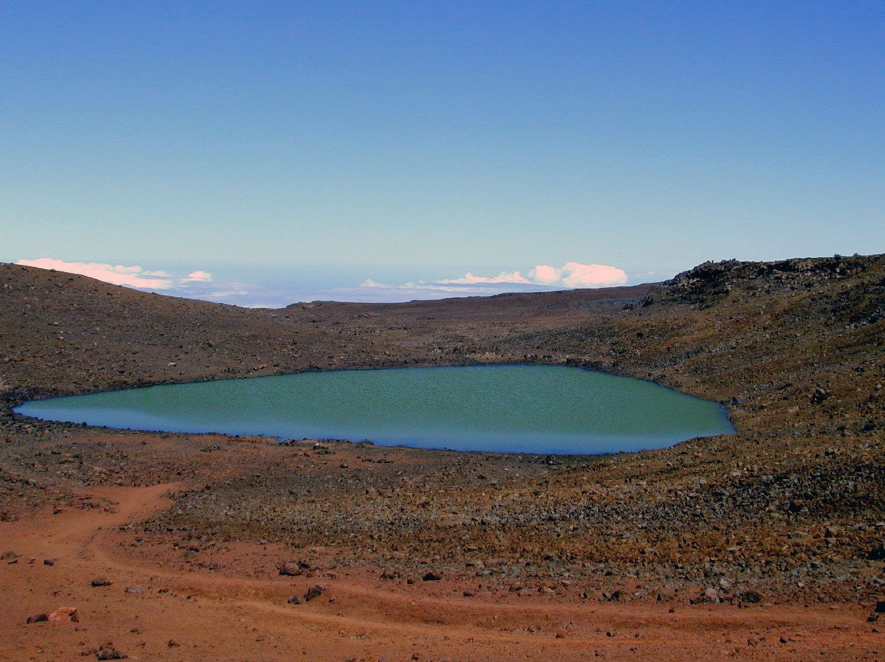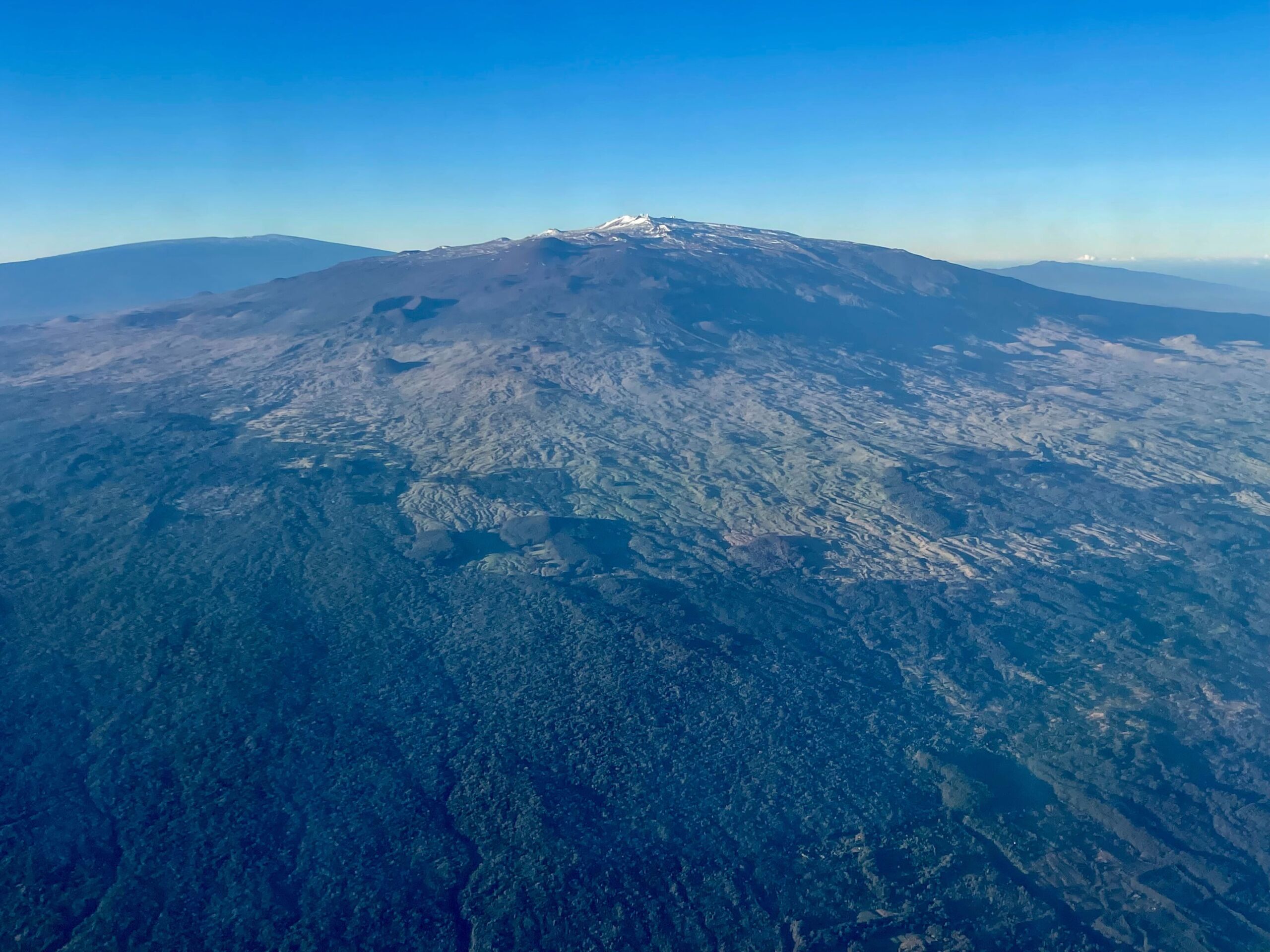By Kuʻupuamaeʻole Kiyuna, J.D., Legal Specialist/Kaliʻuokapaʻakai Collective Coordinator, Huliauapaʻa
In November 2023, Mauna Kea was accepted for inclusion on the Hawaiʻi Register of Historic Places (HRHP) as a Traditional Cultural Property (TCP) and district. On behalf of co-nominators KAHEA and Mauna Kea Anaina Hou, Huliauapaʻa researched, drafted, and presented the nomination to the Hawaiʻi Historic Places Review Board. The Board approved Mauna Kea’s listing as a TCP and District on the State register and also recommended the nomination move forward for consideration for National Register of Historic Places (NRHP) listing.
TCPs are places associated with the cultural practices or beliefs of a living community that are both rooted in a community’s history and important in maintaining its continued cultural identity.
TCP designation benefits state and county agencies because it provides more information at the forefront of regulatory compliance processes. For planning purposes, agencies won’t have to perform historic preservation eligibility and significance assessments at the state or federal levels because the property’s eligibility and significance have already been established through the TCP designation process. This benefit also extends to cultural impact assessments required under Hawaiʻi state law and environmental review because Mauna Kea’s cultural significance as a TCP is established.
To be eligible for an HRHP or NRHP listing, a historic property must meet at least one criteria of significance. In the Mauna Kea nomination, Huliauapaʻa provided an in-depth analysis of how Mauna Kea exceeds all eligibility criteria (association with a historical event, a significant person, an example of notable architecture, or provides information important to understanding history and prehistory).
Significance is inherent from the role Mauna Kea plays in Hawaiian cosmology and the community’s historically rooted beliefs, customs and practices; Mauna Kea’s association with paramount deities that feature in Hawaiian cultural traditions and practices as well as ali‘i (chiefs) who recognized and reinforced their connections to Mauna Kea; the distinctive ways Hawaiians historically sourced and manufactured stone tools, installed ahu (shrines) and trails, and established heiau (temples) on Mauna Kea that uniquely exemplify master craftsmanship; the unique array of Hawaiian cultural resources and practices that occurred in the the ʻāina mauna (mountain lands); the open spaces and viewscapes Hawaiians traditionally elected not to modify that are important to religious and traditional ceremonies; and the critical information Mauna Kea yields that contributes to our understanding of Hawaiian history and pre-contact history.
The preservation of Mauna Kea enhances the environmental quality of Hawaiʻi as a major watershed and its role in the hydrologic cycle, and facilitates the perpetuation of Hawaiian cultural knowledge generation and the recognition of the sacred nature of Mauna Kea to Kānaka Maoli (Native Hawaiians).
The boundary for the TCP and district is from the 6,500-foot elevation on state public lands to the summit. Although this boundary does not account for the boundlessness of Mauna Kea—the totality of the traditional and continued cultural uses of the mauna, its significance and connection with the contiguous biocultural landscape and beyond—it does include the critically important wao akua (godly realm) and large portions of the ʻāina mauna that inherently contribute to Mauna Kea’s significance, integrity, and qualifying criteria as a TCP.
Further reading on nominating TCPs: Parker, Patricia, and Thomas King. 1998. Guidelines for Evaluating and Documenting Traditional Cultural Properties. National Register Bulletin. U.S. Department of the Interior, National Park Service, National Register, History and Education, National Register of Historic Places.
Editor’s note: This article appears in the March 2024 issue of Historic Hawai‘i News.
Image at top of page: Ho‘okupu (ceremonial offering, a tribute to one of higher standing) laid at Lake Waiau. Offering Ho‘okupu is one of many ceremonial practices that continue to be performed on Mauna Kea, particularly at places of specific significance such as Lake Waiau.(Noted in Historic Register nomination.) Photo by Kelley Uyeoka.
Images above, clockwise from top left:
- Map of wahi kūpuna (ancestral places) within the Mauna Kea HRHP and NRHP Nomination Boundaries. This is not an exhaustive compilation of the cultural significant places that comprise Mauna Kea as a historic property, TCP and district. Figure by Dominique Leu Cordy, Huliauapaʻa.
- Northeastern view of the summit of Mauna Kea at sunset piercing above the cloudbank and into the realm of Wākea. Photo by Kelley Uyeoka.
- Pu‘u Wai‘au with Mauna Loa in the background. Photo by Kelley Uyeoka.
- Kuahu (shrine) composted of upright stones on an elevated foundation at Keanakākoʻi Adze Quarry. Photo by Kepā Maly.
- Lake Wai‘au, where traditional cultural practices of collecting ka wai kapu o Kāne (sacred water of Kāne) and depositing piko (umbilical cords) of newborns take place. Photo by Kepā Maly.
- Northeastern flank of Mauna Kea from summit to ‘āina mauna, to the beginning of the wao kānaka (human realm) where people reside, view to the northeast. Photo by Kelley Uyeoka.


